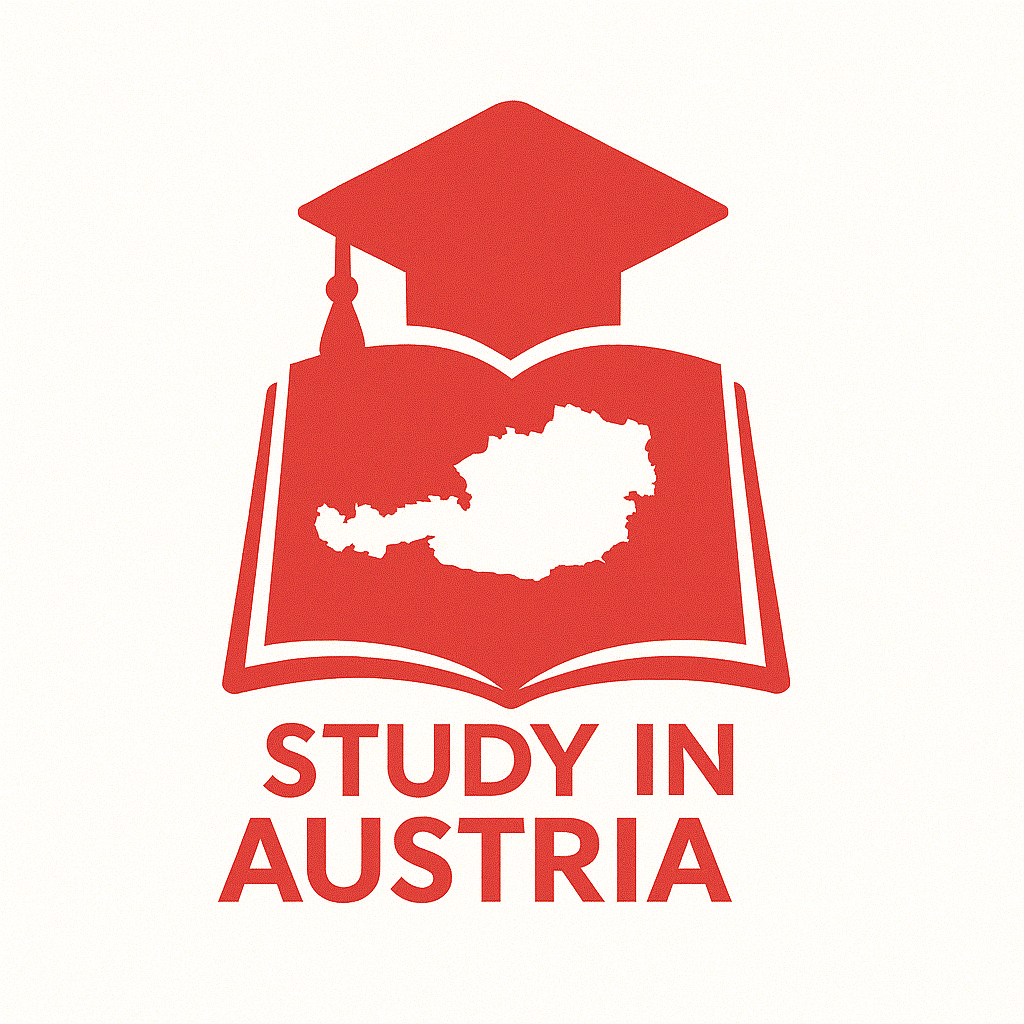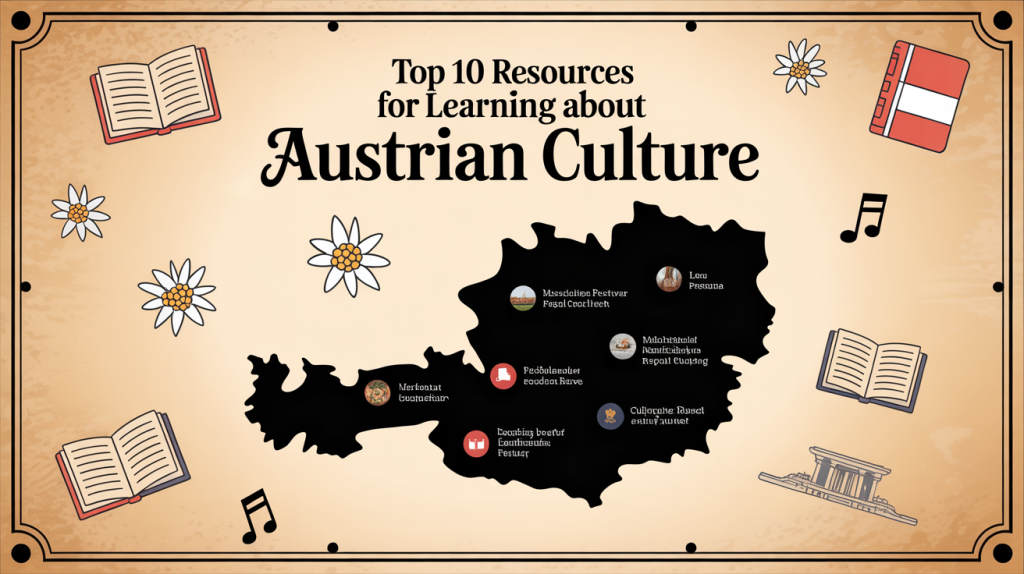Top 10 Resources for Learning About Austrian Culture and History
Quick Navigation
- Overview of Austrian Culture
- The Habsburg Empire and Political Heritage
- Austrian Cities and Regional Diversity
- Austria’s Musical Legacy
- Visual Arts and Architecture
- Austrian Language and Dialects
- Customs and Traditions
- Traditional Austrian Dances and Music
- Historical Timeline and Milestones
- High Quality of Life and Contemporary Society
- Conclusion
1. Overview of Austrian Culture
Austrian culture is multifaceted, representing a blend of historical influences and modern traditions. Known for its exceptional hospitality, Gemütlichkeit, the country offers a unique lifestyle characterized by:
- Warmth and friendliness: The concept of Gemütlichkeit signifies a welcoming spirit, reflected in daily interactions.
- Rich arts and music tradition: From classical concerts to contemporary art, Austria is a hub of cultural expression.
- Culinary exploits: Enjoying a coffee in local cafés is a proud tradition, alongside enjoying world-famous pastries.
To start your exploration, the Study in Austria platform provides comprehensive insights into what makes the Austrian way of life distinct and engaging.
2. The Habsburg Empire and Political Heritage
The historical significance of the Habsburg dynasty profoundly shaped Austria’s identity. This empire, reigning from the 13th century until World War I, left an indelible mark on the nation’s:
- Architecture: Iconic landmarks like Schönbrunn Palace showcase the grandeur of imperial life.
- Culture: Many customs and traditions stem from the Habsburg legacy, influencing everything from politics to arts.
Understanding this historical context can enrich students’ appreciation for Austria’s current societal dynamics. The Study in Austria platform offers resources that delve into this fascinating political heritage.
3. Austrian Cities and Regional Diversity
Austria’s cities are brimming with unique character and history. Major urban centers such as:
- Vienna: Known for its imperial palaces and vibrant arts scene.
- Salzburg: The birthplace of Mozart, it captivates visitors with its baroque architecture.
- Graz: A UNESCO World Heritage site where medieval charm meets modern innovation.
Each region contributes to a tapestry of local customs and traditions, making it essential for international students to explore these cities. By tapping into this cultural diversity, students can more fully engage with their surroundings.
4. Austria’s Musical Legacy
Austria is often touted as the “music capital” of the world. The country boasts a rich musical heritage, featuring:
- Legendary composers: The likes of Mozart, Strauss, and Schubert have left an impactful legacy in classical music.
- Cultural events: Regular concerts and festivals showcase this enduring musical tradition.
Students can deepen their appreciation for this aspect of Austrian culture by attending concerts and exploring related educational programs available through the Study in Austria platform.
5. Visual Arts and Architecture
The visual arts scene in Austria is as vibrant as its music. Notable contributions include:
- Artists: Figures such as Gustav Klimt and Egon Schiele revolutionized art with their distinctive styles.
- Art museums: Institutions like the Belvedere and the Kunsthistorisches Museum are home to invaluable collections.
Exploring the nuances of visual arts will enhance students’ understanding of contemporary and historical artistic expressions within Austria.
6. Austrian Language and Dialects
Language is a vital component of culture. In Austria, the German language is predominant, but it comes with unique regional dialects that reflect local culture. Key aspects include:
- General German: The standard language used in formal settings and education.
- Dialects: Regional variations can significantly differ, adding layers of meaning and cultural richness.
A solid grasp of language nuances can help international students adapt more effectively and connect with locals. The Study in Austria resources include language support and cultural immersion programs.
7. Customs and Traditions
Austrian customs and traditions are deeply rooted in the country’s history. Significant cultural elements include:
- Festivals: Events like Fasching (Carnival) and Christmas markets bring communities together.
- Cuisine: Traditional dishes such as Wiener Schnitzel and Sachertorte highlight culinary heritage.
Understanding these customs not only enhances students’ experience but also helps them form genuine connections with their peers and the local community.
8. Traditional Austrian Dances and Music
Dance is a vibrant aspect of Austrian culture, with folk traditions still celebrated today. Noteworthy dances include:
- The Viennese Waltz: A graceful dance synonymous with elegance and a staple in dances and events.
- Folk dances: Regional variations like the Ländler and Schuhplattler are often performed during cultural festivals.
Engaging with these traditions can provide students with insight into the social fabric of their host country and opportunities to participate in community events.
9. Historical Timeline and Milestones
A comprehensive understanding of Austria’s history is crucial for international students. Essential points include:
- Celtic and Roman roots: The country’s heritage dates back to ancient times.
- Formation of national identity: Milestones such as the establishment of the Austrian flag signify crucial moments in the nation’s story.
An exploration of history enables students to grasp the diverse influences that have shaped modern Austria, fostering a more profound connection to their studies and environment.
10. High Quality of Life and Contemporary Society
Modern Austria is frequently ranked among the best places to live, highlighting:
- Safety and stability: Austria has a low crime rate, contributing to its reputation for safety.
- Standard of living: High living standards, efficient public services, and accessible education make it an attractive destination.
Understanding the contemporary social landscape can prepare international students for the challenges and opportunities they may encounter during their studies. The Study in Austria platform assists by offering insights into daily living, housing options, and social norms.
Conclusion
Exploring Austrian culture and history provides international students with a comprehensive perspective that enhances their educational journey. The Study in Austria platform is dedicated to equipping students with the essential resources, enabling them to fully embrace this rich culture.
By utilizing these top 10 resources, students can deepen their appreciation for Austrian society, ensure a smoother transition, and build meaningful connections.
Take the Next Step with Study in Austria
Ready to explore more about studying in Austria? Dive deeper into the numerous opportunities available for international students by visiting our resources.

